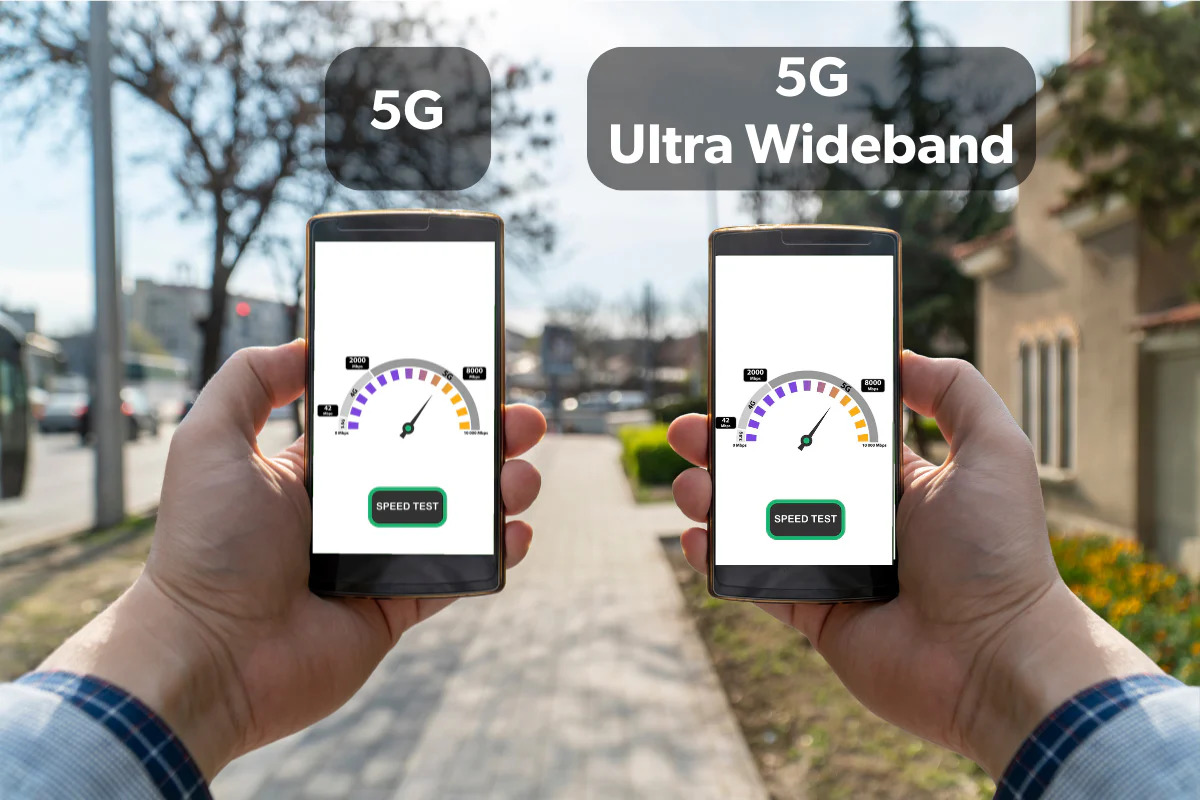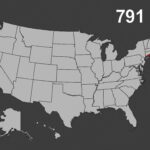The icon 5G UW displayed in your smartphone’s status bar is an abbreviation that stands for 5G Ultra Wideband. It is a specific marketing term used by Verizon Wireless in the United States to signify that your device is currently connected to its highest-performing 5G network tier.
In simple terms, seeing the 5G UW meaning you are on Verizon’s fastest possible connection, which leverages both high-band (mmWave) and mid-band (C-band) spectrum to deliver significantly faster speeds and lower latency than its standard 5G service. This comprehensive guide will break down the technology behind 5G UW, explain why it’s faster, and detail what you need to access it.

5G UW: The Definition and Technology
The world of 5G is not monolithic; carriers divide their network into different “bands” based on radio frequency. 5G UW is the name Verizon gives to its premium network that uses the more capable frequencies.
What is 5G Ultra Wideband?
5G Ultra Wideband (5G UW) refers to the parts of Verizon’s 5G network that operate on two crucial high-frequency bands:
- Mid-Band (C-Band): This offers a great balance of speed and range. It can deliver speeds that are dramatically faster than 4G LTE while still covering broad geographic areas, making it the backbone of Verizon’s rapidly expanding fast 5G coverage.
- High-Band (mmWave): Millimeter wave (mmWave) offers the absolutely fastest possible speeds—often exceeding 1 gigabit per second (Gbps)—but its signals can only travel short distances and are easily blocked by walls, trees, and other obstacles. This coverage is typically limited to dense urban areas, sports stadiums, concert venues, and airports.
When you see the 5G UW icon on your phone, it means you are connected to either the high-speed Mid-Band or the ultra-fast mmWave High-Band.
5G UW vs. Standard 5G: A Comparison
Standard 5G, often referred to as “5G Nationwide” on the Verizon network, uses low-band spectrum. While low-band covers a much wider area and is great for rural and suburban locations, its speeds are generally only slightly faster than, or comparable to, older 4G LTE technology.
The table below illustrates the key differences in how mobile carriers differentiate their services based on frequency:
| Feature | Low-Band 5G (Standard 5G / Nationwide) | Mid-Band & High-Band (5G UW / Ultra Wideband) |
| Speed | Similar to 4G LTE (10–250 Mbps range) | Significantly Faster (100 Mbps to 1+ Gbps) |
| Coverage | Excellent and widespread | Limited (primarily urban areas, dense crowds) |
| Latency | Moderate (similar to 4G) | Extremely Low (ideal for real-time gaming) |
| Purpose | Broad coverage and basic connectivity | High-performance, high-capacity, and high-speed uses |
How Other Carriers Brand Their Fast 5G
Since 5G UW is a Verizon-specific branding, other major carriers use different names for their equivalent high-speed 5G networks:
- T-Mobile: Uses the icon 5G UC (meaning Ultra Capacity). This is T-Mobile’s branding for their faster mid-band and mmWave networks.
- AT&T: Uses the icon 5G+ (meaning 5G Plus). This is AT&T’s branding for their comparable high-speed mid-band and mmWave networks.
The Benefits of Being Connected to 5G UW
When your phone displays the 5G UW symbol, you are getting the best mobile data experience your carrier offers. This superior performance unlocks several capabilities:
- Ultra-Fast Downloads: You can download large files, HD movies, games, or entire music playlists in a matter of seconds, not minutes.
- Seamless 4K/8K Streaming: Enjoy crystal-clear, high-definition video streaming without buffering, even in congested areas.
- Lag-Free Gaming: The extremely low latency (reaction time) is critical for cloud gaming and multiplayer online games, providing a smoother, more responsive experience.
- High-Capacity Performance: 5G UW is built to handle many users simultaneously. In crowded places like sporting events or busy city squares, you will maintain fast speeds while others on lower bands might experience throttling.
How to Get and Use 5G UW
Accessing the fastest network requires three main components: a compatible phone, a specific service plan, and being in the right location.
- Device Compatibility
To connect to 5G UW, your phone must be 5G Ultra Wideband capable. Most modern smartphones, including the latest models of iPhone (12 series and newer), Samsung Galaxy S series, and Google Pixel devices, are compatible, provided they have the necessary hardware (modem and antenna) to utilize the mid-band and mmWave frequencies.
- Required Service Plan
Verizon generally reserves access to the 5G Ultra Wideband network for its higher-tier unlimited data plans (e.g., Unlimited Ultimate and Unlimited Plus). If you are on a basic or older low-tier plan, you may be capped at the slower “5G Nationwide” service, even if you are in a 5G UW coverage area.
- Coverage Area
The most critical factor is location. While 5G UW coverage is rapidly expanding, it is still concentrated in specific areas:
- Major metropolitan centers.
- High-traffic venues like stadiums, arenas, and airports.
- Busy downtown sections of large cities.
If you leave one of these designated high-speed zones, your phone will seamlessly drop down to the standard 5G or 4G LTE network, and the 5G UW icon will disappear.
Frequently Asked Questions (FAQ)
- Is 5G UW the same as 5G UWB?
Yes, they are the same. On some Android devices, the icon may display as 5G UWB (for Ultra Wideband) instead of 5G UW. They both refer to the same high-speed Verizon network that utilizes mid-band and mmWave technology. Note that this is different from Apple’s proprietary Ultra-Wideband (UWB) wireless technology used for local communication (like AirTags).
- Why is my phone showing 5G UW but the speed is still slow?
While 5G UW is designed for high speed, performance can still be affected by several factors:
- Congestion: If you are in a high-capacity area with thousands of other users, speeds can decrease.
- Signal Blockage: If you are connected to the ultra-fast mmWave (High-Band), moving a few feet or stepping behind a thick wall can severely degrade or drop the signal entirely.
- Device Issues: An overheating phone can temporarily throttle data speeds to prevent damage, causing the 5G UW speeds to drop.
- Is 5G UW faster than T-Mobile’s 5G UC?
Both 5G UW (Verizon) and 5G UC (T-Mobile) represent the fastest tiers of service offered by their respective carriers, utilizing similar mid-band and high-band frequencies. In terms of peak speed, both can deliver excellent performance. While mmWave is technically faster, the practical speeds you experience day-to-day depend more on which carrier has deployed the most mid-band (C-Band) capacity in your specific location. Generally, they offer a comparable, superior experience to standard 5G.
Conclusion
The 5G UW meaning is simple: it is 5G Ultra Wideband, your signal strength indicator that you are currently on Verizon’s fastest network. Seeing this symbol means you are connecting via the most advanced mid-band or mmWave frequencies available, enabling lightning-fast downloads, crystal-clear streaming, and lag-free performance. If you see it, you can rest assured you’re getting a top-tier mobile experience.


